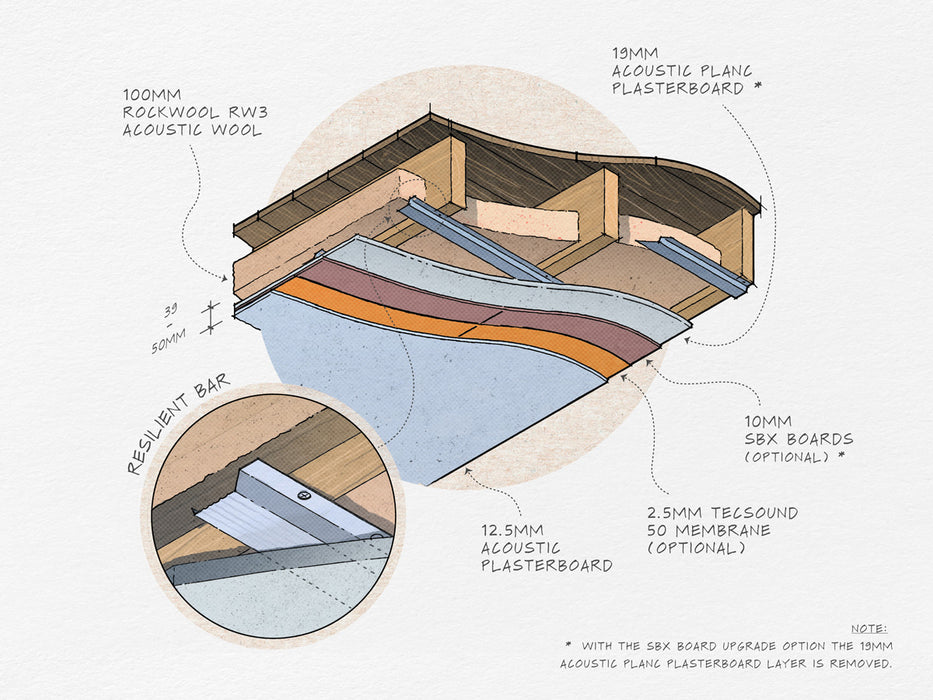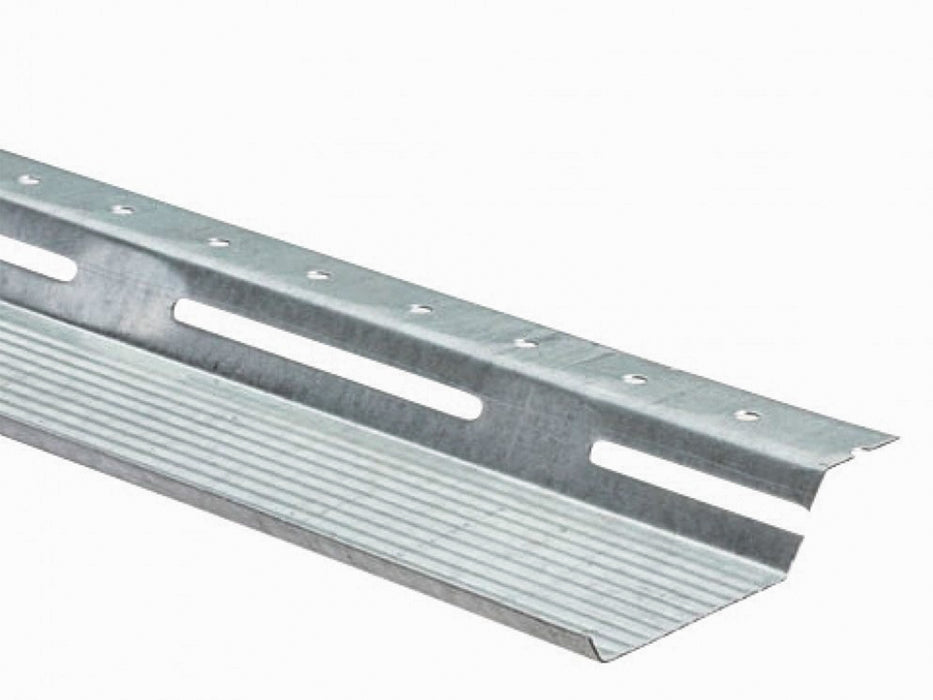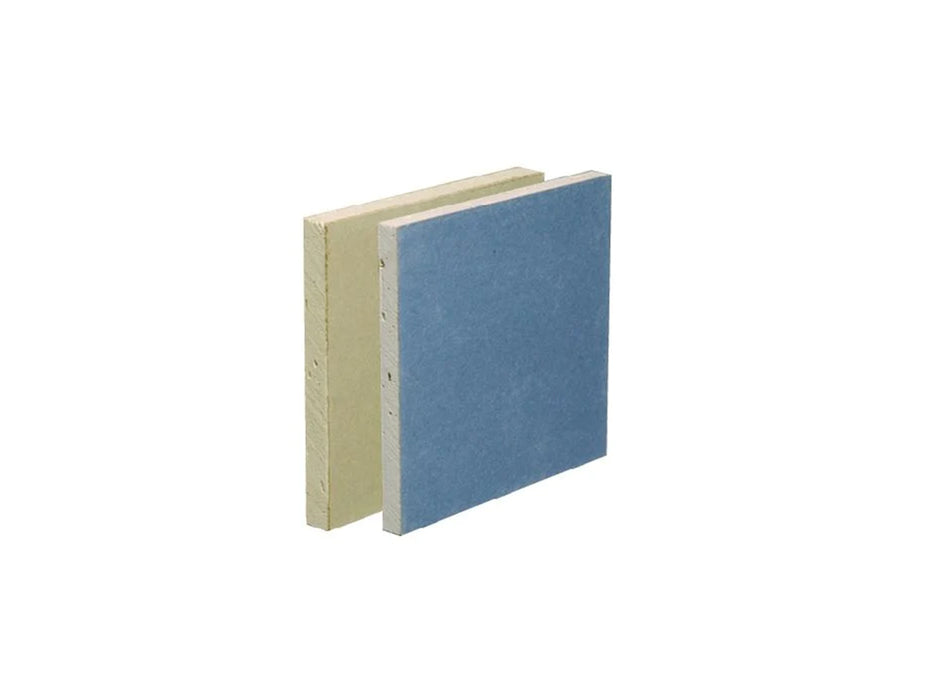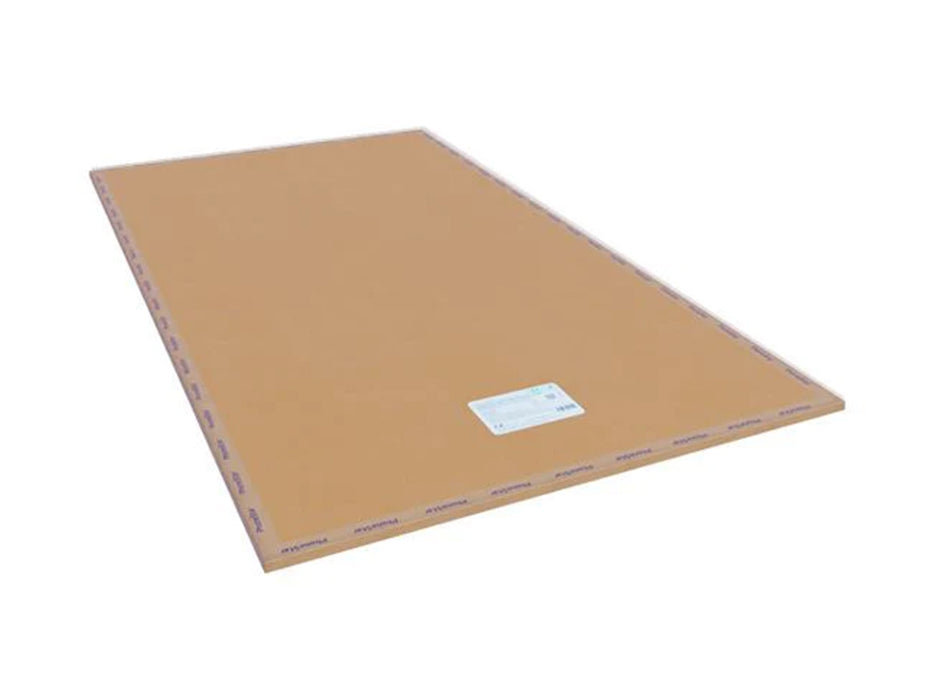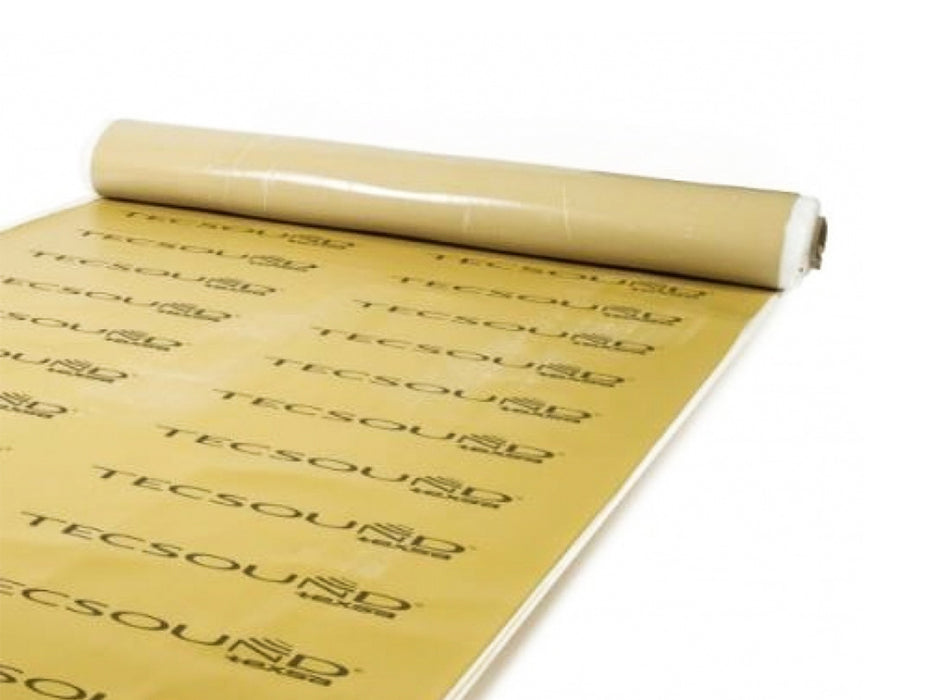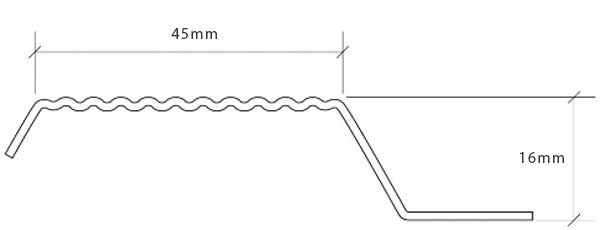A vibration absorbing resilient corrugated steel bar used on timber studs and joists, for soundproofing walls and ceilings.
The most common application for resilient bars is for use in soundproofing a ceiling or a wall. One of the most important things to remember is that to ensure maximum sound insulation performance, screws fixing the plasterboard must not be in contact with the joists. When installing a dual layer of boards, all joints in the second layer must be staggered in relation to those of the first layer.
Why the Resilient Bar?
Where you are constrained by space issues the choice of a resilient bar may be your only practical choice when soundproofing a ceiling or wall. With this solution you will lose just over an inch (35mm) from your original wall or ceiling. The resilient bar, or sound breaker bar works by decoupling the new suspended stud wall or ceiling from the joists. The new wall or ceiling is in effect floating off the stud or joists via lightweight corrugated steel bars. The sound is absorbed as it travels through the corrugated flange of the resilient bar.
How they work
Resilient bars, as the name suggest act as the resilient layer that separates the mass of plasterboards from the rest of the surface that you are soundproofing. What is key to the success of any soundproofing work is that the weight you add should, where possible, be separated from the surface to be soundproofed by a resilient or springy layer.absorbed as it travels through the corrugated flange of the resilient bar.

